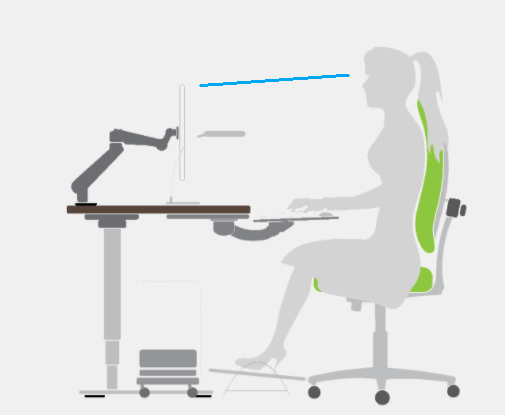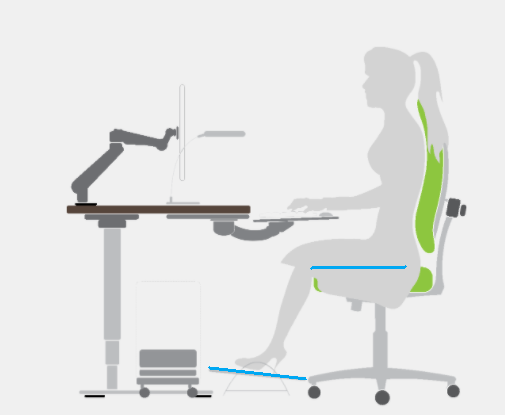By Prem Parmar | Feb 9th, 2021
Posture and Ergonomics
Tips and suggestions to improve workplace and home ergonomics
There is no perfect posture, so get moving!
Any sustained posture will cause increased stress on the structures required to hold that position. Taking breaks more frequently throughout the work-day has been shown to be more beneficial than conventional work-breaks in healthy workers to prevent work-related neck pain and improve energy levels throughout your day2.



Monitor height

Monitor height affects resting neck position. Low monitor angle was shown to be a favoured intervention compared to high monitor angle for the general population in preventing neck pain1.
Chair height
Chair height has an affect on the resting position of your lumbar spine, pelvis, and hips. Having your chair height too low can lead to shortening of the hip flexors and cause the low back to curve out of neutral spine.

Lumbar Support

Sitting for extended periods of time will often lead to excessive lumbar kyphosis (forward bending), and although this is a normal movement of the spine, extended periods in this position are not optimal2.
Exercise!
Neck/Shoulder strengthening as well as whole body light resistance training were shown to be beneficial in office workers symptomatic with neck pain1. These exercises can also be great way to strengthen the neck and shoulder girdle muscles to prevent forward head posture and positions that stress the neck, thoracic spine, and shoulders.
References
- Chen X, Coombes BK, Sjøgaard G, Jun D, O’Leary S, Johnston V. Workplace-based interventions for neck pain in office workers: systematic review and meta-analysis. Physical therapy. 2018 Jan 1;98(1):40-62.
- Embodia Academy Online Course: “Work from Home Ergonomics” by Dr. Jonas Eyford